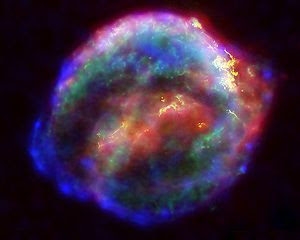Natural Phenomenon : Supernova
Four hundred years ago, on 1604, a previously unseen star suddenly appeared in the night sky. It was much brighter than all other stars we would ever seen. The thing later named supernova, which not only beautiful, but also could be dangerous if it gets too close to us.
Supernova is a beautiful, epic moment that created by a blast of death star. The word supernova was coined by Walter Baade and Fritz Zwicky in 1931. Its name was derived from nova that means new. Besides a blast that emit lights, supernovas are also known as the end of star’s life cycle. Supernovae may expel much, if not all, of the material away from a star at velocities up to 30,000 km/s or 10% of the speed of light.
The most recent supernova visible to the eye was Supernova 1987A, in the year 1987. It was approximately 168.000 light-years away from us. Based on its elements that appears on their spectra, supernova divided unto 2 types, type 1 that contains no hydrogen and type 2 that contains hydrogen.
The type 1 itself was divided unto 3 more types;
- Type 1a that present a singly ionized silicon line at 615 nanometers
- Type 1b that shows a non-ionized helium
- Type 1c (the weakest one)
Massive star burn huge amount of nuclear fuel at their cores or centers. This produces tons of energy, so the center of the star gets really hot. The heat generates pressure, and the pressure created by a star's nuclear burning also keeps that star from collapsing.
A star is in balance between two opposite forces. The star's gravity tries to squeeze it into the smallest, tightest ball possible. But the nuclear fuel inside it burning the star's core that creates a strong outward pressure. This outward push resits the inward squeeze of gravity.

Comments
Post a Comment